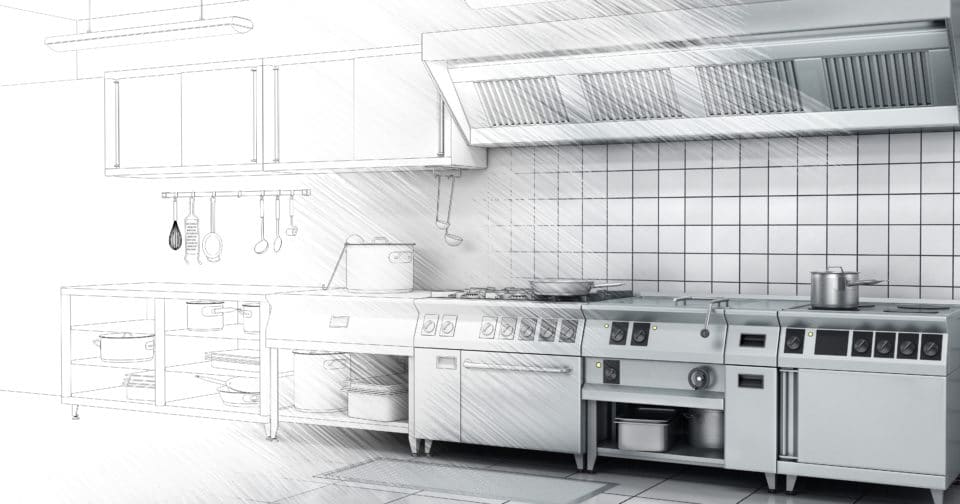
To start this final year of the first quarter of this century, it seemed to be a good idea to examine the basics of what we do as foodservice consultants for our clients’ businesses through facility design and management systems that we deliver.
In summary, we help them:
- Be more efficient through more profitable business practices,
- Improve their customer service and product quality,
- Improve efficiency,
- Increase their ability to do more with less,
- Make work safer, faster, easier and more rewarding,
- Produce more, more quickly,
- Make their products safe through better systems and design,
- Reduce costs through technology,
This is interesting, because, in summary, this is exactly what defines what industrial systems engineers (ISEs) do for their clients. In fact, the roles of foodservice consultants and industrial systems engineers have much in common. Certainly. most industrial engineering is concerned with the high-volume production of a small number of items whereas the majority of foodservices are high mix, low volume businesses, but the principals outlined apply to both.
Specific to the foodservice industry is the more nuanced industrial engineering strategy of “Job Shop Lean”, developed by Dr Shahrukh Iran in his book titled, Job Shop Lean, which advocates a move from a product-based view to a process-based view. In this case rather than the product moving, as in the case of high volume (HVLM) manufacturing, the worker moves in high-mix, low volume (HMLV) manufacturing. Whilst in most cases as designers and consultants we are concerned with the menu (the product), once it is defined, the task becomes all about the processes required to deliver the product (the meal).
The value of continuous improvement
The word “lean” in the original context of manufacturing was developed from the Toyota Production System (TPS) which placed a value on continuous improvement and empowering employees. It has almost become a cult in manufacturing (along with Six Sigma and other management theories) but with the level of control tending to create a barrier to change and often increasing stress on employees.
Job Shop Lean comes from the opposite end of the lean process with teams working on the value/ergonomics/safety/quality/delivery cost and final the product inventory model: think a bain-marie or food warmer ready for service. However, as Dr Shahrukh says, unlike lean manufacturing which tends to be academic: Job Shop Lean is a contact sport, with practitioners actively involved in the shop floor; that is, the kitchen.
Industrial Systems Engineers (ISE) apply a systematic approach to evaluating and optimising the production process, energy consumption, the speed of production and the cost of products and employ critical thinking and practical (as opposed to theoretical) skills to innovate. It all sounds familiar to a hands-on foodservice consultant, doesn’t it?
An industrial systems engineer or foodservice consultant implementing Job Shop Lean methodology will identify:
- Value – the customer is central,
- Value Stream – helps visualize the processes involved in the production,
- Flow – the process needs to run smoothly in a tight sequence,
- Pull – applying a smooth production flow, the customer requirement effectively “pulls” the product through the system.
- Perfection – lean principals are not static but need to be repeated with a consistent quality.
How to benefit from the opportunity
It might be a shock to some catering businesses and their consultants to think of their businesses as “manufacturers”, but by thinking that way, they may benefit from the opportunity offered by strategies applied by other types of manufacturing to improve their businesses or resolve issues.
As a topical instance, lean manufacturing as applied by industrial systems engineers can be a process of continual improvement through the elimination of waste – both materials and labor; by examining unnecessary:
- Movement
- Waiting
- Defects
- Overproduction
- Over-processing
- Lack of communication
An ISE works to eliminate waste of time, money, materials, energy, equipment, and other commodities. All of which apply to the foodservice industry in exactly the same way, and which has become an important industry issue for 2025 for the sustainability of the environment, not only for business but for the planet.
Value stream mapping (VSM) is one tool for developing the processes required for improvement or problem resolution. The value stream is the set of actions that take place to add value to a customer from the initial request through to the completion of the request. It categorizes and evaluates each step or process in terms of: value add – non-value add (but necessary) and waste. Mapping each separately identifies current (making sure to show exactly the situation, not what should be happening), the ideal and the future.
The starting point for VSM could be a problem statement that contains a brief description of what “pain” is being experienced by the business. For an ISE as well as a foodservice consultant this needs to be in the voice of the customer (whether internal or external). The mapping has to focus on the customer experience – what brings value to the customer and identifies and eliminates time and energy that brings no value to the customer.
Our businesses are all about optimising processes, improving efficiency and enhancing productivity for the benefit of our internal and external clients. As the Milliken Company identifies the 4m’s: Machines, Manpower, Methods, Materials – to which others add a 5th M: Money – are all essential for the design of systems and facilities for the delivery and operation of a foodservice business; always with the customer being central – our reason for being in 2025 and beyond.
(A small footnote: A University of Chicago study found industrial engineers were in the top 10 of those professions with the happiest people.)
Tim Smallwood FFCSI
